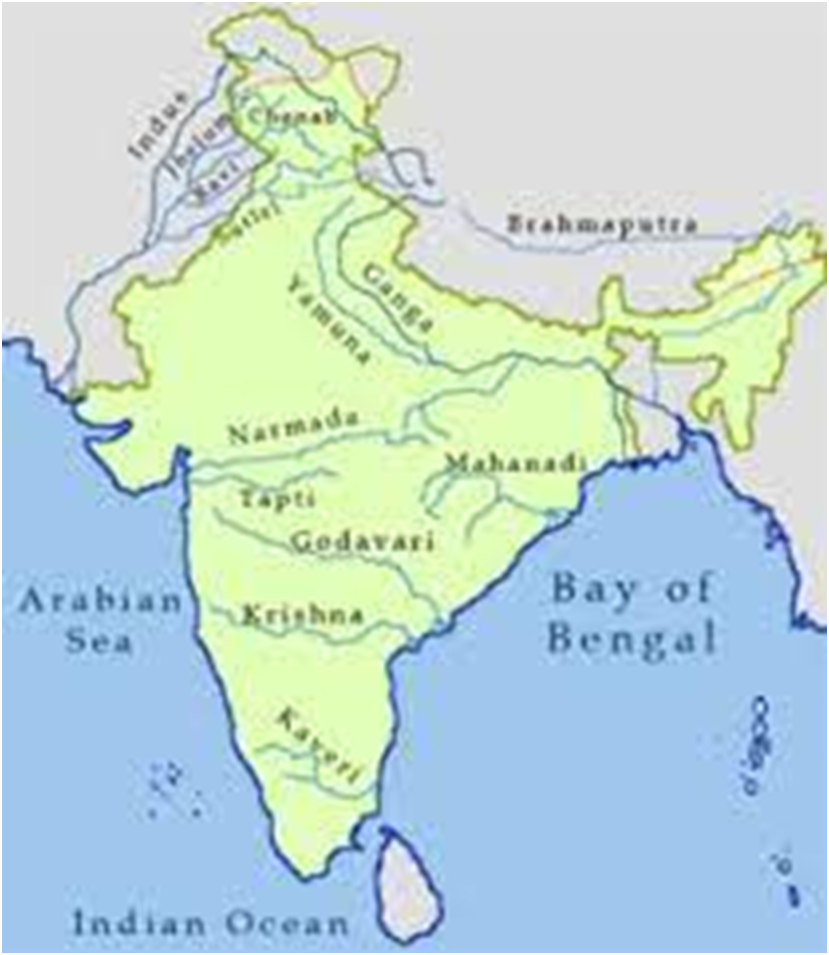- Books Name
- Learn with me Social Science Book
- Publication
- Learn with me publication
- Course
- CBSE Class 9
- Subject
- Social Science
Drainage
- ‘Drainage’ is a term which describes the river system of an area.
- A drainage basin or river basin is an area which is drained by a single river system.
- An upland that separates two drainage systems that are next to each other is called a water divide.
- On the basis of origin, there are two river systems of India — The Himalayan rivers and the Peninsular rivers.
- Himalayan rivers are rainfed and snowfed, so they have water in them throughout the year, i.e. they are perennial.
- Himalayan rivers perform intensive erosional activity in the upper course.
- In the lower course, they carry huge loads of silt and sand.
- Himalayan rivers create meanders, oxbow lakes and other depositional features on their course.
- Peninsular rivers are seasonal; mostly depending on rainfall.
- Most of the rivers of peninsular India originate in the Western Ghats and flow towards the Bay of Bengal.
The Himalayan Rivers
- A river along with its tributaries may be called a river system.
- The major Himalayan rivers are the Indus, the Ganga, and the Brahmaputra.
The Narmada Basin
- Rising in the Amarkantak hills, Narmada flows to create a gorge in marble rocks of Madhya Pradesh.
- Narmada flows towards the west in a rift valley formed due to faulting.
- Near Jabalpur it flows in the form of deep gorge in the marble rocks and Dhuadhar falls are picturesque locations.
The Tapi Basin
- Originating in Betul, Madhya Pradesh in Satpura ranges.,
- It also flows in a rift valley parallel to the Narmada but is much shorter than Narmada.
- Tapi flows through a basin that covers Madhya Pradesh, Gujarat and Maharashtra.
The main west flowing rivers are Sabarmati, Mahi, Bharathpuzha and Periyar.
The Godavari Basin
- Godavari begins in Nasik district of Maharashtra and is the largest peninsular river about 1500 km.
- Its large basin covers most parts of Maharashtra, Madhya Pradesh, Orissa and Andhra Pradesh.
- The tributaries which join the Godavari include Purna, Wardha, Pranhita, Manjra, Wainganga and Penganga.
- Because of its length and the area it covers, Godavari is also known as the Dakshin Ganga.
- Godavari drains into the Bay of Bengal.
The Mahanadi Basin
- The Mahanadi, a 860 km long river, rises in Chhattisgarh to flow through Orissa to reach the Bay of Bengal.
- Mahanadi river basin is shared by Maharashtra, Orissa, Jharkhand and Chhattisgarh.
The Krishna Basin
- The 1400 km long Krishna river rises from a spring near Mahabaleshwar to reach the Bay of Bengal.
- The tributaries of Krishna include Bhima, Musi, Ghatprabha, Koyana and Tungabhadra. The Krishna basin is shared by Maharashtra, Karnataka and Andhra Pradesh.
The Kaveri Basin
Originating in the Brahmagiri range of the Western Ghats, the Kaveri reaches the Bay of Bengal at Kaveripatnam, sharing its basin with Karnataka, Tamil Nadu and Kerala.
The river Kaveri makes second biggest waterfall in India known as Sivasamudram.
Other smaller rivers like Damodar, Brahmani, the Baitarani and Subarnlekha


 Learn with me publication
Learn with me publication
